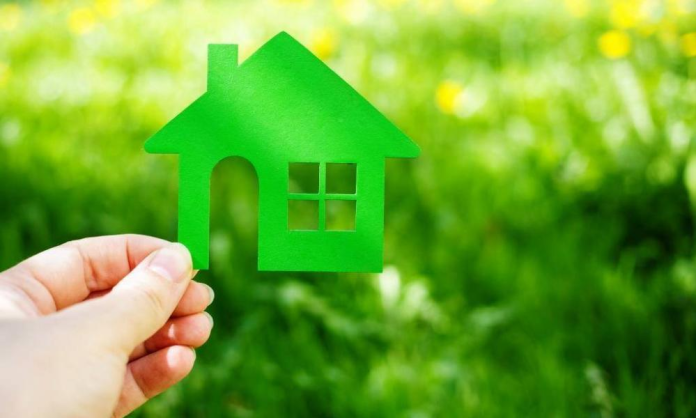
“The greatest threat to our environment is the belief that someone else will save it.” – Robert Swan.
Sustainable design isn’t just a trend, it’s the wave of the future. It isn’t a choice, it’s a necessity for survival. The design industry is undergoing a revolution. It’s more than using sustainable materials and using less plastic. It’s everything from how comfortable and safe an environment feels to technologies automating manual work both at home and in workplaces. Although sustainable design is a movement to create a better future, some of its principles date back to more than a hundred years. The concept of repairing, reusing, and recycling materials is pretty old. However, its implementation is on the rise at the moment.
How is it different from other design trends in architecture?
Sustainability is a broad concept that pertains to a structure’s overall ability to provide a comfortable, productive, and healthy environment. It negates any harmful impact and promotes recycled materials. Sustainable designs aren’t just about the environment, but also consider the three pillars of sustainability: people, planet, and progress.
Let’s look at some of the sustainable design trends that have been ruling the charts in 2022:
- Shifting focus towards sustainable materials
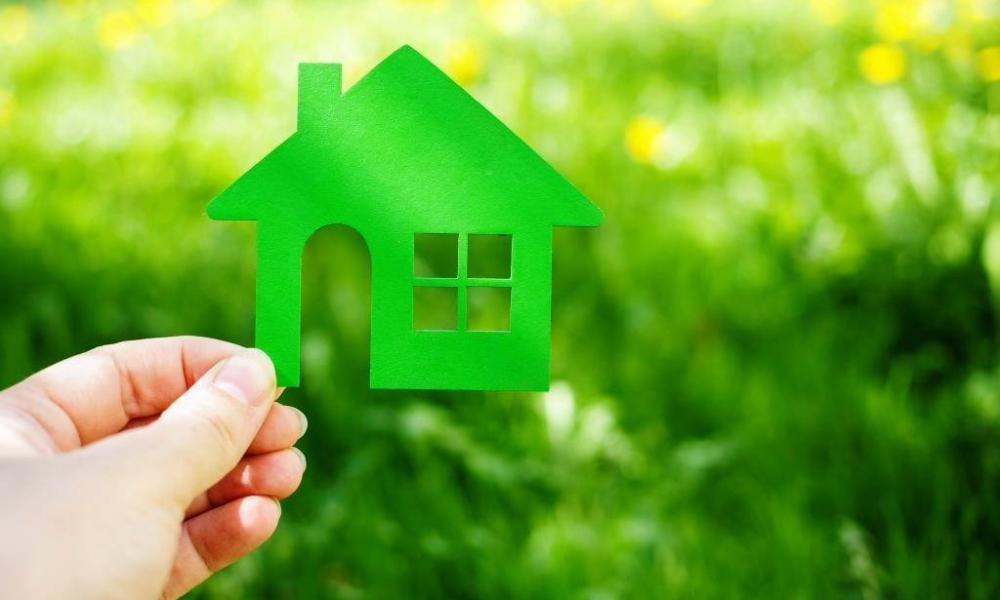
Incorporating sustainable building materials is the foremost step towards reducing environmental hazards, cost-reduction, minimizing waste, and making the most of the materials without depleting the resources. As the world has been experiencing the most excruciating crisis, it is critical to consider sustainable practices as a differentiator.
Apart from access to natural light and green materials, architects should also explore the emerging trends in the design world. Some of the popular sustainable materials are natural clay, known for its durability, thermal insulation, and fire resistance, natural stone with a variety of cladding options, cork often used in home designs impersonating hardwood, bamboo for its versatility in construction work, straw bales used as structural elements for its load-bearing capacity, timber, hempcrete for thermal and acoustic insulation and more.
2. Inculcating green walls
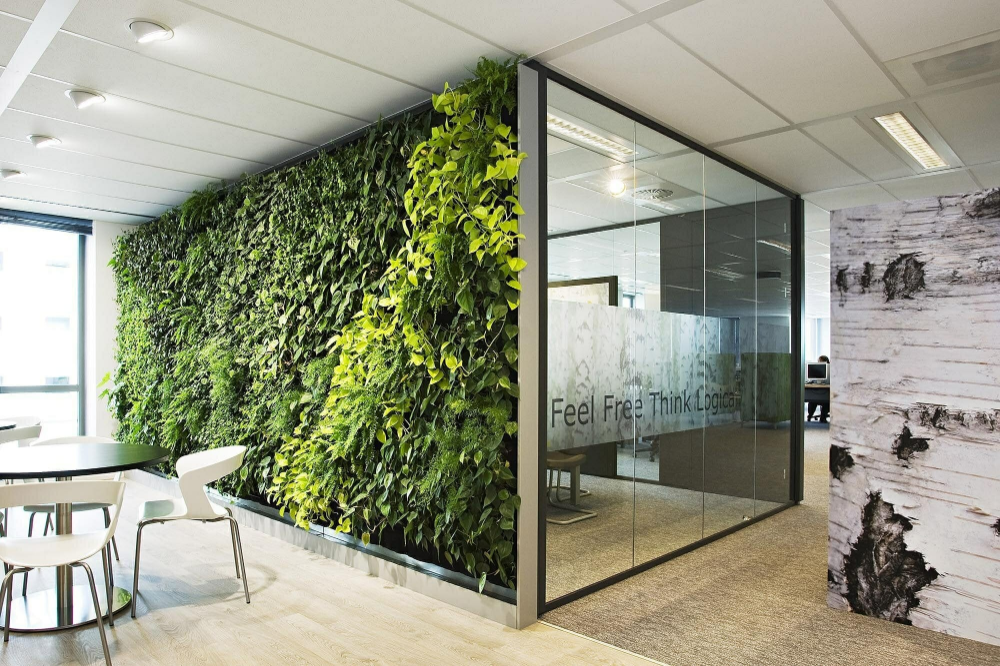
The purpose of adding a green wall, also known as a vertical garden or an eco-wall into a closed space is to ensure that the air circulation is purified, the temperature is maintained, energy costs are reduced, and noise levels are minimized. It also serves as an acoustic filter which is a requirement in large organizations. What’s better is that people are happier around a green environment. The liveliness it brings improves productivity, aids prolific interactions, and opens up discussions on investing in sustainable practices. Living walls have these features, as well as the sustainable image they project, that can make a dramatic statement for any organization.
3. The demand for biophilic designs
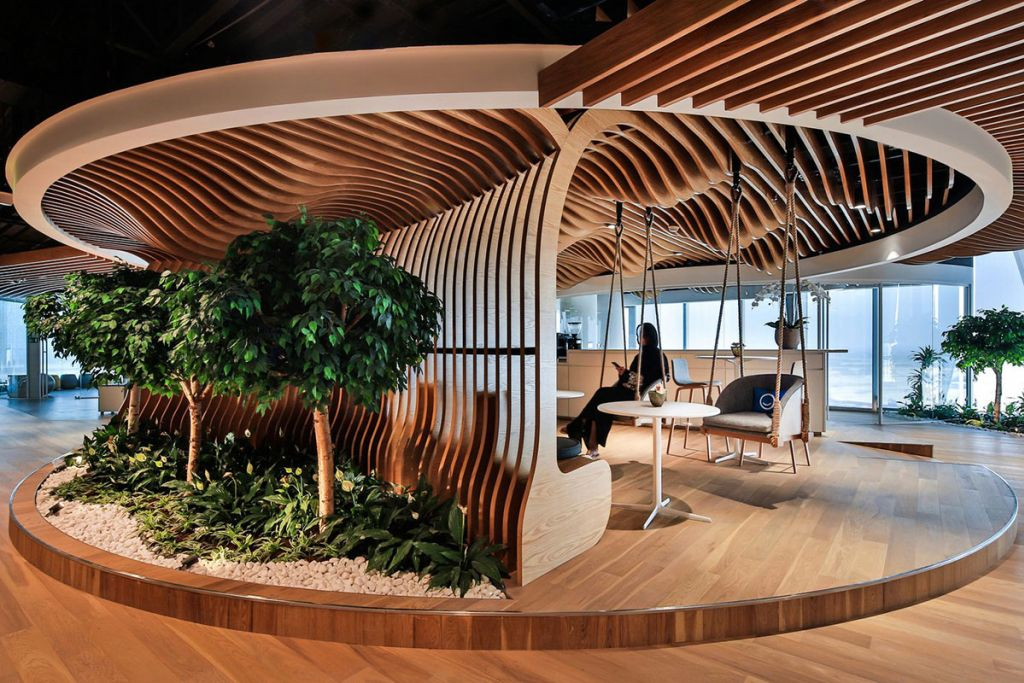
Biophilic designs are beyond adding green pockets, or planters to a space. It focuses on the interactions between people and nature – one that is inspired by nature’s pattern, shapes, textures, colors, and rhythms. It also includes factors like climatic concerns, lighting, and ventilation. A recent study supports the positive impacts of biophilic design – it reduces stress, improves productivity, and helps in the emotional well-being of occupants which is why it is highly prioritized as a design trend. Employee productivity costs are 112 times higher than energy costs in the present times, so incorporating nature into the workplace seems like a great investment.
4. Reduce, reuse, recycle and repeat
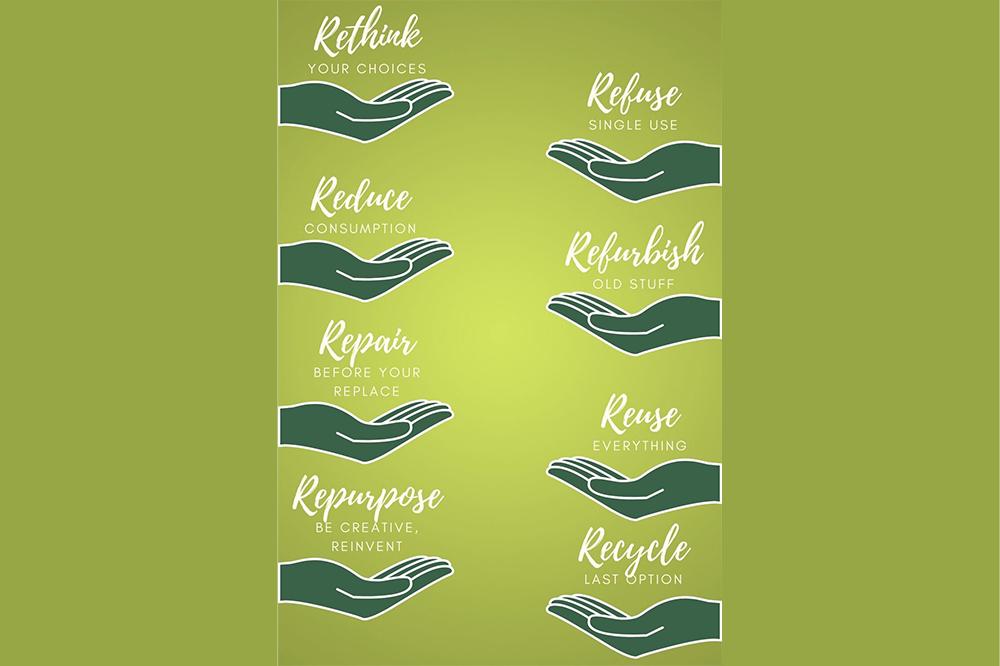
The principles of this concept are quite basic and are a necessity for maintaining a sustainable lifestyle. Reducing the overuse of building materials and the toxicity of trash is a vital step toward preventing waste. The concept of reuse is important for the lifecycle of any material, but there are times when a second life isn’t possible for certain materials.
A proactive strategy here is to choose products that are can be recycled or at least is an alternative to less recyclable material. The process of recycling includes many steps, but it can simply start with dropping items such as glass, cans, plastic, or newspapers into a recycle bin.
Sustainability is a collective responsibility so when individuals take part in this practice consciously, increasing their awareness, the easier the whole process will be. This will, in turn, recreate a higher demand for recycled products and will make big companies invest in recycled products.
5. The rise of prefabrication in architecture
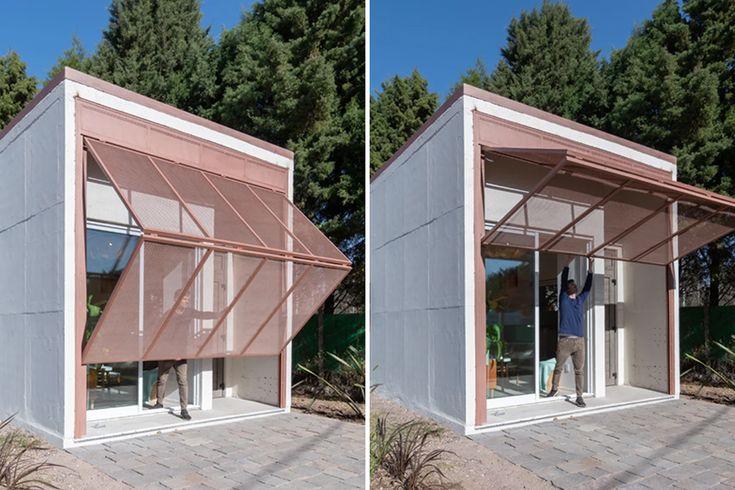
Prefabrication is not a new concept. However, its implementation is on the rise at the moment and prefabricated materials are increasing in popularity.
The three reasons why prefabrication brings great ROI to a project are, that it improves the quality of details in record time, it addresses material costs and labor shortages, and it saves both time and money by standardizing items. Portable partition walls allow offices to improve lighting conditions, ventilation, and flexibility in design while reducing the waste generated by fixed walls.
The finished product can be shipped directly to the location, thereby minimizing the volatile organic compounds and air quality issues that are associated with traditional drywalls and waste.
6. An approach toward emotional well being
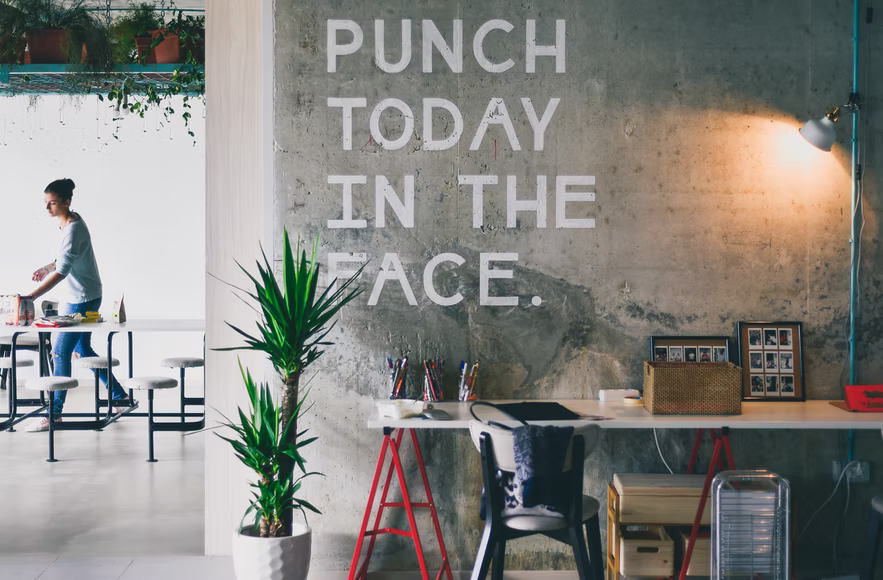
When we talk about green design, it is no longer just about the structure but also about the people using the space. A sustainable design can take care of both the physical and emotional needs of people. A human-centric design that values relationships and focuses on building a healthy environment rightly fits the definition.
7. Implementing green business strategies
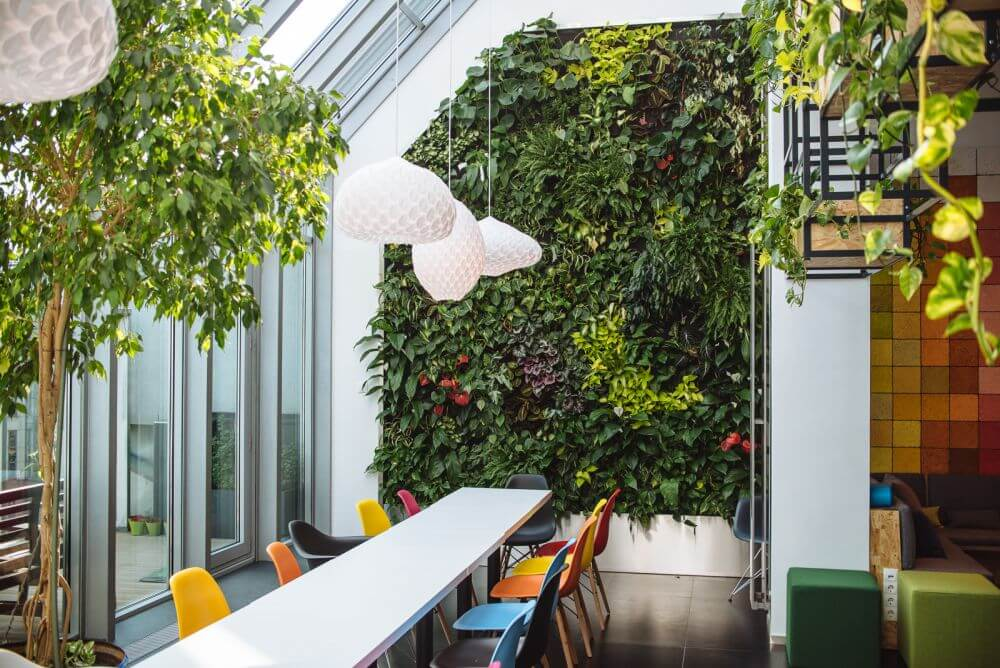
A recent study at the Harvard University T.H Chan School of Public Health brought forward that indoor air quality, CO2 levels, and chemicals have a strong impact on the cognitive functioning of employees. The cognitive function of employees’ scores in green offices was about 61 percent higher as opposed to those who worked in a non-green office space. Investing in designs that promote emotional stability should be the top priority. Factors like natural light, color theory, and space activities have been known to increase productivity.
8. Developing a sustainable mindset

Developing a sustainable mindset with organizations will be a norm as we move towards human-centric designs. Mental health and community well-being will be critical design components. Architectural design will need to adapt to new technologies that formulate solutions by keeping the needs of the people first. A sustainable mindset needs to consider environmental, social, and economic needs to deliver growth and profit for organizations.
9. Technology-based learning environment

We are constantly connected to technology whether it’s replying to emails or getting into a zoom call with an international client. Constructive designs that create interactive sessions, individual work pods, and isolation corners for work breaks allow for human comfort without compromising with productivity.
10. Using technology to create sustainable designs
Technology is at the center of office designs. It is no longer a luxury but a necessity. The office spaces include automatic lighting controls, optimized energy use, and HVAC settings based on movement and space utilization. The conference room is combined with room scheduling programs, which means that employees do not need to be concerned about charging phones or adjusting the lighting for video calls.
Key Takeaway:
Most of us make the mistake of assuming that sustainable design practices only involve using green materials and technologies that reduce environmental impact. And while that’s equally important, we need to understand that building a sustainable mindset of putting people first is the way forward for designers.
Two years into the Covid-19 pandemic was enough to teach us that we cannot afford to take our mental health for granted. Sustainable materials will undoubtedly benefit the environment and yield a huge return on innovations, but designers must involve human comfort in every trend, which is non-negotiable.
As an architect myself, I have observed the evolution of sustainable design trends in the last few years, and I must say that now is a great time to be an architect.
References:
https://www.ambius.com/green-walls/benefits/
https://uk.work-agile.com/the-12-environmental-features-of-biophilic-design/
http://www.arch.utah.edu/net_zero_energy_project/documentation/group4_resourcemanagement-1.pdf
